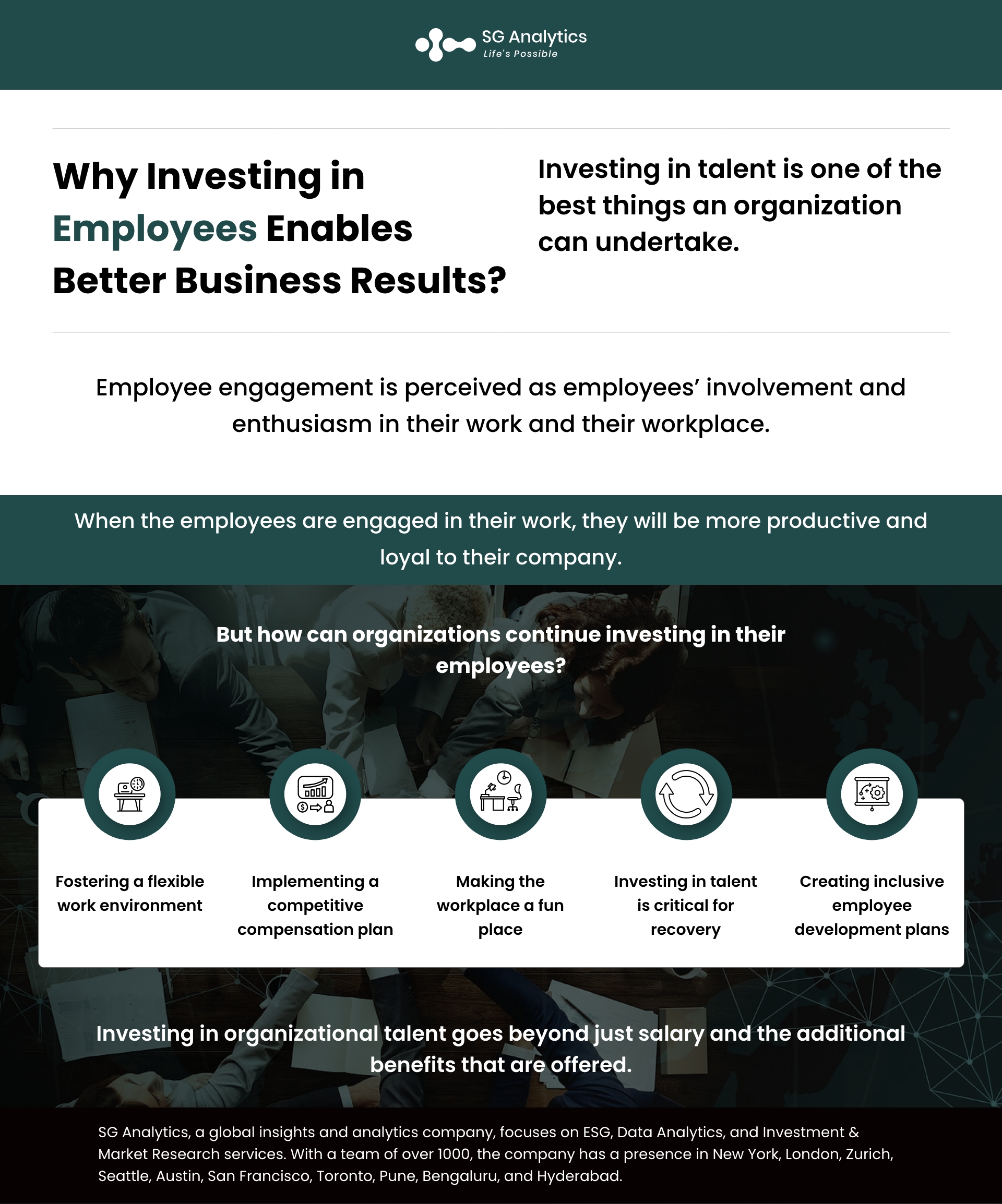One thing that the pandemic taught every organization is the significance of investing in your employees. While organizations were probably aware of the importance, companies with higher engagement are now becoming more resilient and productive. To generate higher revenue, they are tending to the needs of their employees.
In recent Gartner surveys, CEOs rate culture as their biggest concern when it comes to in-office and work-from-home policies for knowledge workers, and HR leaders say the most challenging aspect of the hybrid strategy is adjusting their current culture to be supportive of their workforce. However, current trends in business and technology indicate that the way employees work has and will continue to change.
Today, employee engagement is perceived as employees' involvement and enthusiasm in their work as well as their workplace. Essentially, this makes a difference when employees are engaged in their work, whereas those who are just waiting to finish their daily tasks.
Read more: The Rise of a Data-Driven Work Environment: What Do Enterprises Need to Know

A recent Gallup research started that worldwide around 85% of employees are either unengaged or actively disengaged at work, despite the effort put in by organizations. It is a tough place when employee engagement is lacking, no matter what parameters are employed for their growth and comfort, especially if the organization is actively working towards improving it.
Investing in organizational talent is one of the best things an organization can undertake. When the employees are engaged in their work, they will be more productive and loyal to their company.
But how can organizations continue investing in their employees? Let's figure out how.
-
Fostering A Flexible Work Environment
Over the span of the past year, there has been a lot of debate about whether employees should return to the office, or they should be allowed to work remotely and integrate the hybrid work model. In the end, there are good arguments that can be made on both sides of the aisle. What most employees are looking for is flexibility. They want to present their best at work while also managing the ongoing demands of their personal lives. With a flexible workplace, employees, as well as the organization, can work in a less stressful environment as well as enjoy their work more.
Workplace flexibility can be perceived in what an employee looks for in it. For instance, an organization can offer their employees the option to arrive early or work late if it suits their schedule.
-
Implementing a Competitive Compensation Plan

It can be challenging for an organization to attract as well as retain top talent if they do not offer a competitive compensation plan. For instance, a competitive salary is at the market level or sometimes above. However, if an organization cannot offer an above-market salary, it can compensate for it in other ways.
Incorporating additional perks such as extra PTO or retirement savings plans can help in making the overall compensation look more attractive. At the very least, businesses can add health, dental, and vision insurance to their competitive benefits package. They can also cover a part of their employees’ premiums, too. Organizations can explore ways to make their employees feel adequately compensated for their work. By putting a strategic compensation package in place, businesses can hire, engage, as well as retain the right talent.
Read more: Types of Hybrid Work Models: How are they Reinventing the Future of Work?
-
Making the Workplace a Fun Place
Does the organization offer a thriving work environment to the employees?
Is the workplace a fun place to be at?
Do the employees get along and work well together?
These questions will assist organizations in finding the required loopholes. And if the answer to them is no, then this is probably an indication as to where the organization should start the fixation process from. If the employees do not enjoy being at work, then it may not matter what benefits package and organization offers.

The initial and easy step an organization can undertake is by focusing on encouraging their employees more – by recognizing the valuable contributions of their employees to the business as well as by providing productive feedback whenever possible. They can even celebrate the employee’s birthday or anniversary. By planning team-building activities, the employees can also get a chance to know more about one another.
-
Investing in Talent is Critical for Recovery
Looking ahead, industry leaders should be wise in supporting employees. This will be not just good for the employees but will also be fruitful for the business. While employee cost-reduction strategies were common and aggressive during the pandemic, the wheels have now turned. Businesses are now exploring and inventing ways to identify new talent opportunities that are centered on supporting employee engagement.
Failing to invest in employees could risk a decline in the discretionary effort as well as the intent to stay at the very time that the organizations require the employees to drive through the economic recovery.
-
Creating an Inclusive Employee Development Plans

Employee development plans in an organization are crucial for business expansion and growth. However, it is even more important. A recent McKinsey survey stated that almost 58% of employees are working from home at least one day per week.
Read more: How are Organizations Modernizing their Data Security and Management?
An employee development plan is a blueprint or a framework for how employees can progress in their prospective careers within an organization. It provides an overview of the employee’s current competencies as well as skills, along with giving them actionable goals to work toward. When undertaken in the right format, the plan can assist aimless employees in gaining a greater purpose in their work. The employee development plans also offer a way to buy into the process, making it fun and optional.
If an organization starts implementing the plan for their employees and makes it mandatory, it will lead to pushbacks. Instead, by fostering an environment of transparency, businesses can create a work culture that supports development.
In Short
-
The pandemic brought the future of work forward, highlighting the need for new policies that put the employees at the center. The new work patterns are being aimed at becoming the next normal.
-
Enabling an innovative, inclusive, and insightful workplace demands a strategy to reevaluate how work is done.
-
It is equally vital to share the lack of connection to the organization’s culture and check how the employees feel.
-
Reshaping culture along with leadership for a sustainable hybrid workplace is equally important.
-
The future direction of the workplace is now aimed at investing in organizational talent to create a fulfilling work environment.
How will the Workplaces Change in the Future?

Pandemic-driven changes in existing working models have led to the creation of a range of challenges and opportunities, including how best to retain and engage existing employees and offer people the value and purpose they now expect from work. With the hybrid work model becoming the norm, concerns are growing about the work culture that is being diluted.
-
Middle management will take up different responsibilities
-
Upskilling and digital dexterity to outweigh tenure and experience
-
Employee data collection will expand with innovative inputs
-
Smart machines will have the same place in the operations, i.e., as colleagues
-
Employees will work for purpose and passion
-
Remote work-life balance will demonstrate new challenges
Read more: Reenergizing the Workplace: Ways to Manage and Overcome COVID fatigue

In Conclusion
After the pandemic and organizations getting comfortable with the new hybrid work setup, businesses are now diverting their attention towards investing more in their employees. Investing in organizational talent goes beyond just salary and the additional benefits that are offered. It is equally vital to take into consideration the time and energy that is put into developing the workplace.
Every employee is different. Hence, what works for one person may or may not work for another. By continuing to try and integrate new components as well as asking for feedback from employees, businesses can explore new avenues of integrating effective measures to promote employee growth. Over time, they will realize that the company culture, as well as the business results, have started to improve.
With a presence in New York, San Francisco, Austin, Seattle, Toronto, London, Zurich, Pune, Bengaluru, and Hyderabad, SG Analytics, a pioneer in Research and Analytics, offers tailor-made services to enterprises worldwide.
A leader in Market Research services, SG Analytics enables organizations to achieve actionable insights into products, technology, customers, competition, and the marketplace to make insight-driven decisions. Contact us today if you are an enterprise looking to make critical data-driven decisions to prompt accelerated growth and breakthrough performance.

